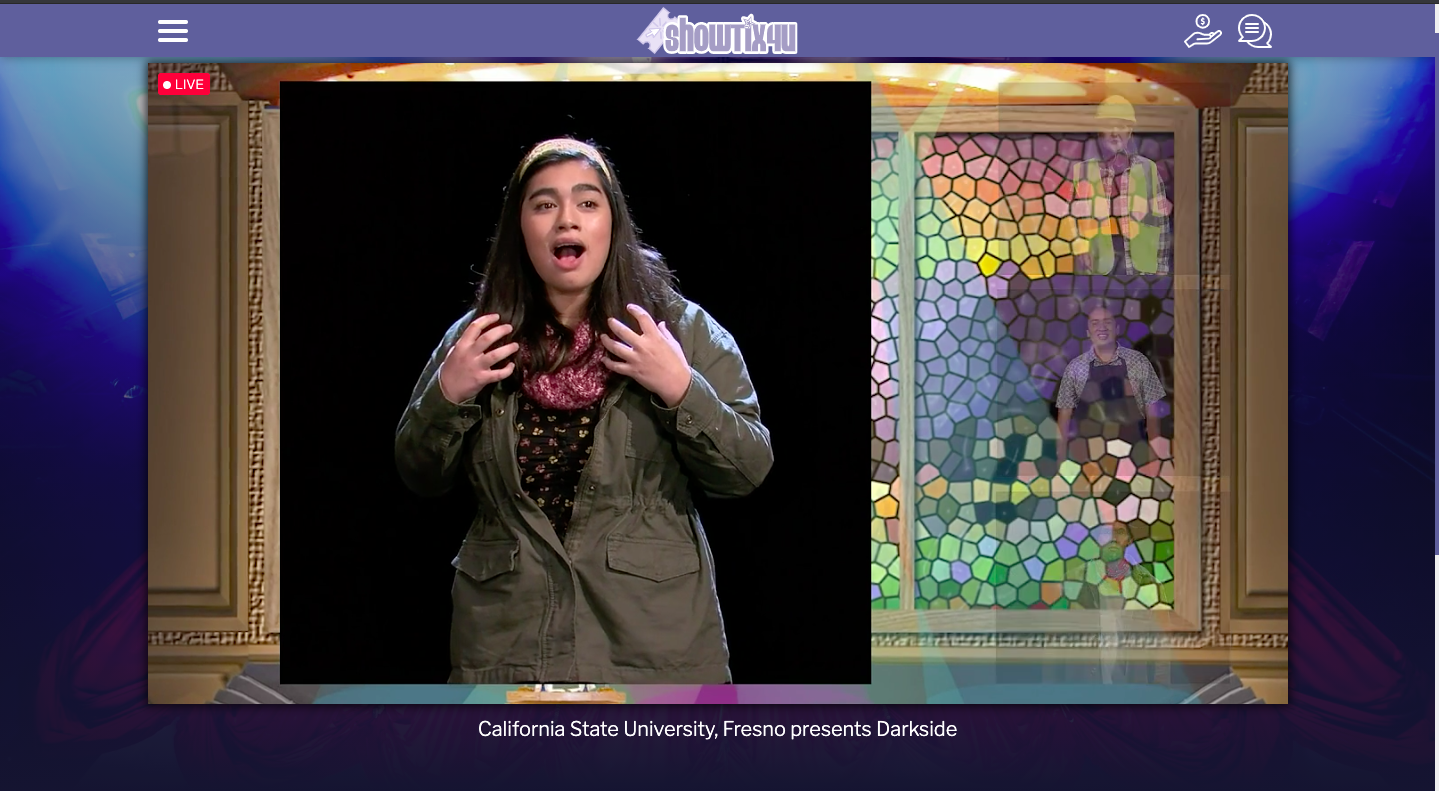The first play performed, filmed and streamed during the COVID-19 pandemic, “Darkside,” offers a new way for theatre lovers to enjoy rich and thought-provoking stories while allowing student actors to gain experience for their future careers.
The 50-minute long show revolves around Emily McCoy, played by Julia Prieto, a college student. She is continuously challenging and questioning ethical dilemmas named “thought experiments” presented by Professor Baggott and executed by Ethics Man. R.L. Preheim plays both characters.

“Darkside” starts with a chaotic scene where a train is speeding off toward a bridge. Ethics Man, decides to save the train and its passengers by diverting it to another track. However, the train ends up on the tracks where a Boy, played by Andrew Mickelson, is standing. The boy doesn’t realize that the train is coming, and he ends up killed. Ethics Man explains that putting the boy’s life in danger was the correct thing to do.
And so, McCoy’s journey begins. While McCoy doubts herself, other characters question if she can save the world with kindness and thoughtful acts. McCoy and the Boy visit a wise man who tells McCoy that “the secret of life is ‘this is not a drill.’” The visit inspires McCoy to question the world and to challenge every decision and situation.
Throughout the play, it is unsure if McCoy is in a dream or her imagination as she has conversations with people who are part of “thought experiments” that cause ethical dilemmas for her. Nevertheless, the ending will make viewers go into their own thought experiments as the play leaves the audience questioning many topics.
The play is set up with intriguing, graphic images in the background while the actors appear in black squares. This setup changes throughout the play; sometimes, one actor is the only one talking, and in other scenes, more than three are present. The setup changes were a stylistic decision by the director and acting professor Kathleen McKinley.
At times, some actors were looking straight at the camera while others were looking to the side. Here is where the spectator will miss live theatre the most because there were times when the scene felt odd since one actor was looking straight at the camera while another was looking slightly to the side. This directing technique was to ensure safety for the actors and prevent the spread of COVID-19.
Once the viewer overcomes this slight discrepancy, the play becomes engaging and provocative.
Another plus for this play is the editing effects. Along with media, communications, and journalism students, Professor Candace Egan managed smooth transitions between scenes and incorporated sound effects that made the experience a little more theatre-like. Additionally, the 14 student actors gave outstanding and credible performances. While watching the play, each student’s dedication to performing in front of a video camera (some of them for the first time) is evident.
As of Nov. 11, there have been 150 streaming links for “Darkside,” according to the play’s promotions manager Miguel Gastelum. However, the streaming links do not represent how many people have watched the show since some students might be watching the show with family members.
Written by Tom Stoppard, “Darkside” is compelling, engaging and contemporary. The show will be available until Nov. 14 to stream at 7:30 pm through ShowTix4U. There is a donation option for viewers at the top right corner of the screen while the show is playing.




